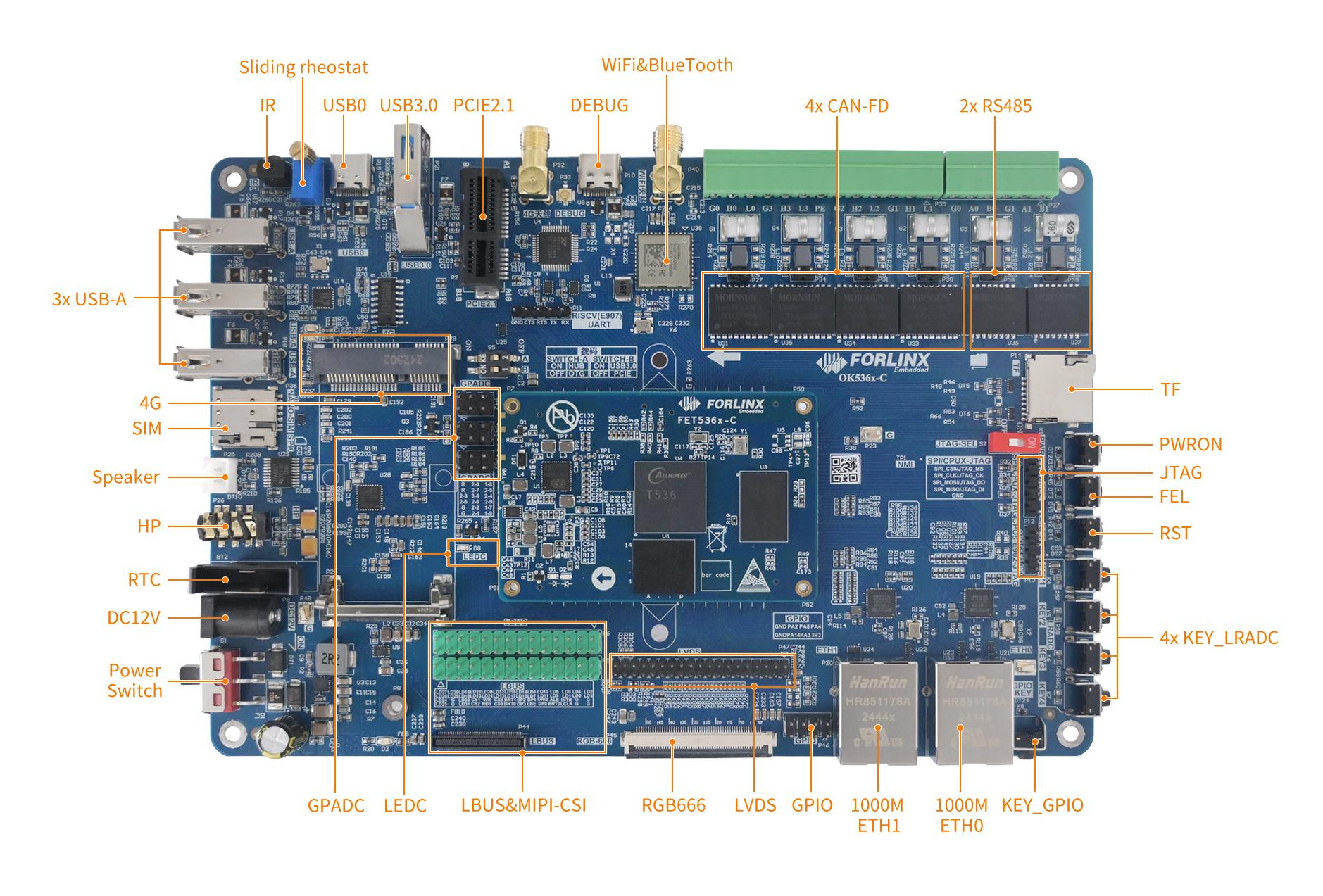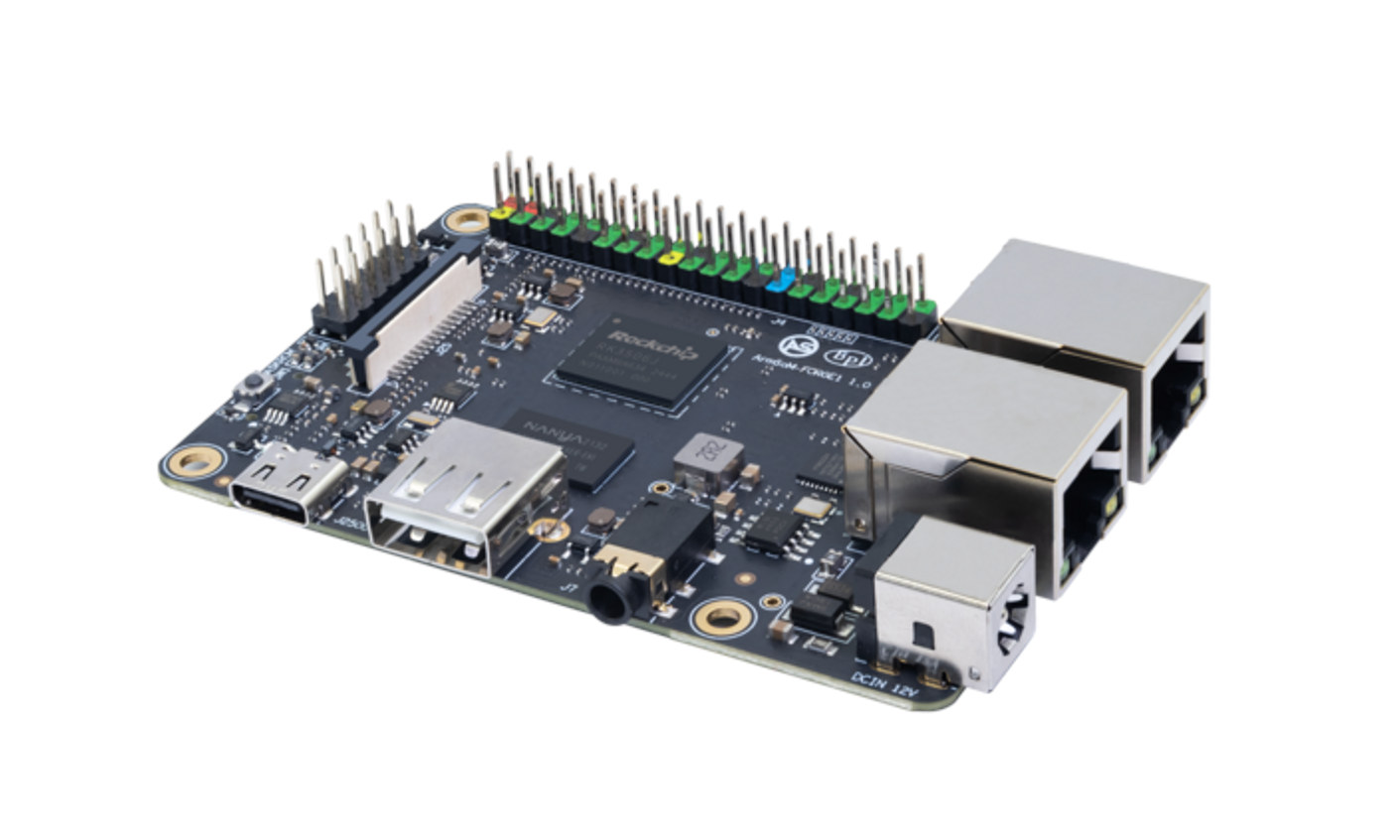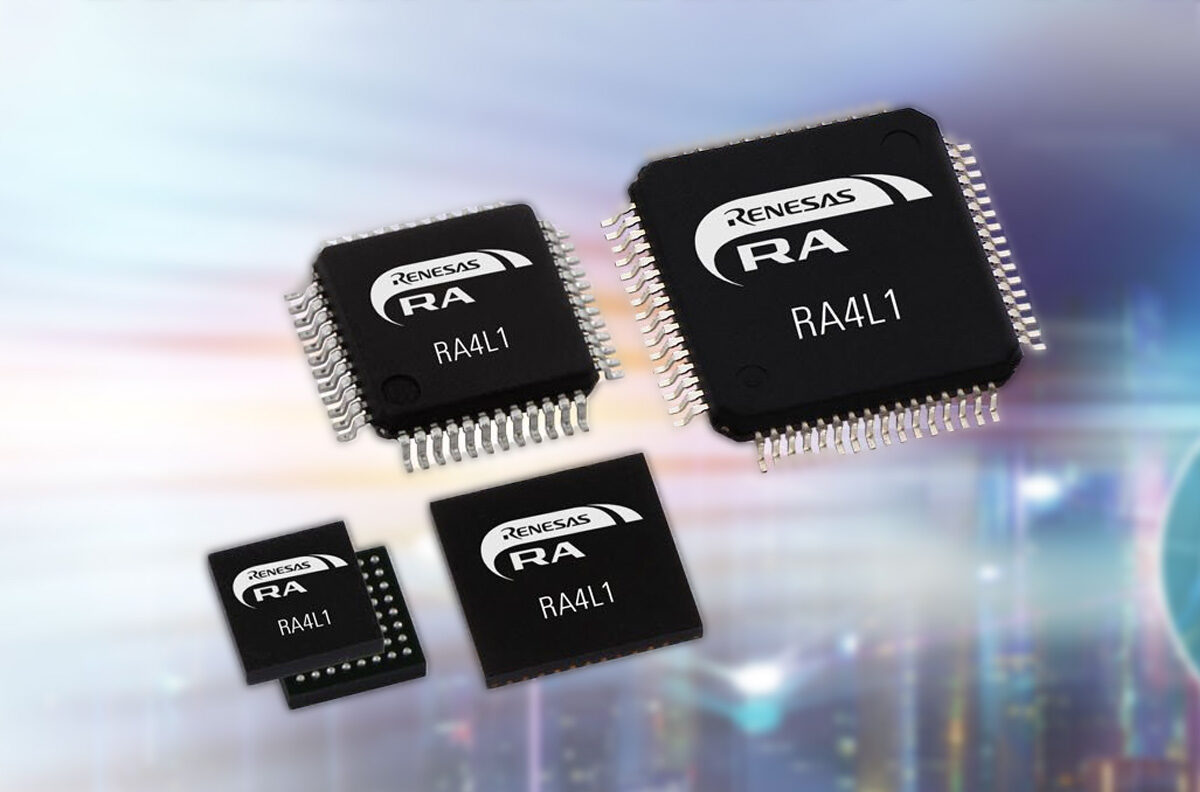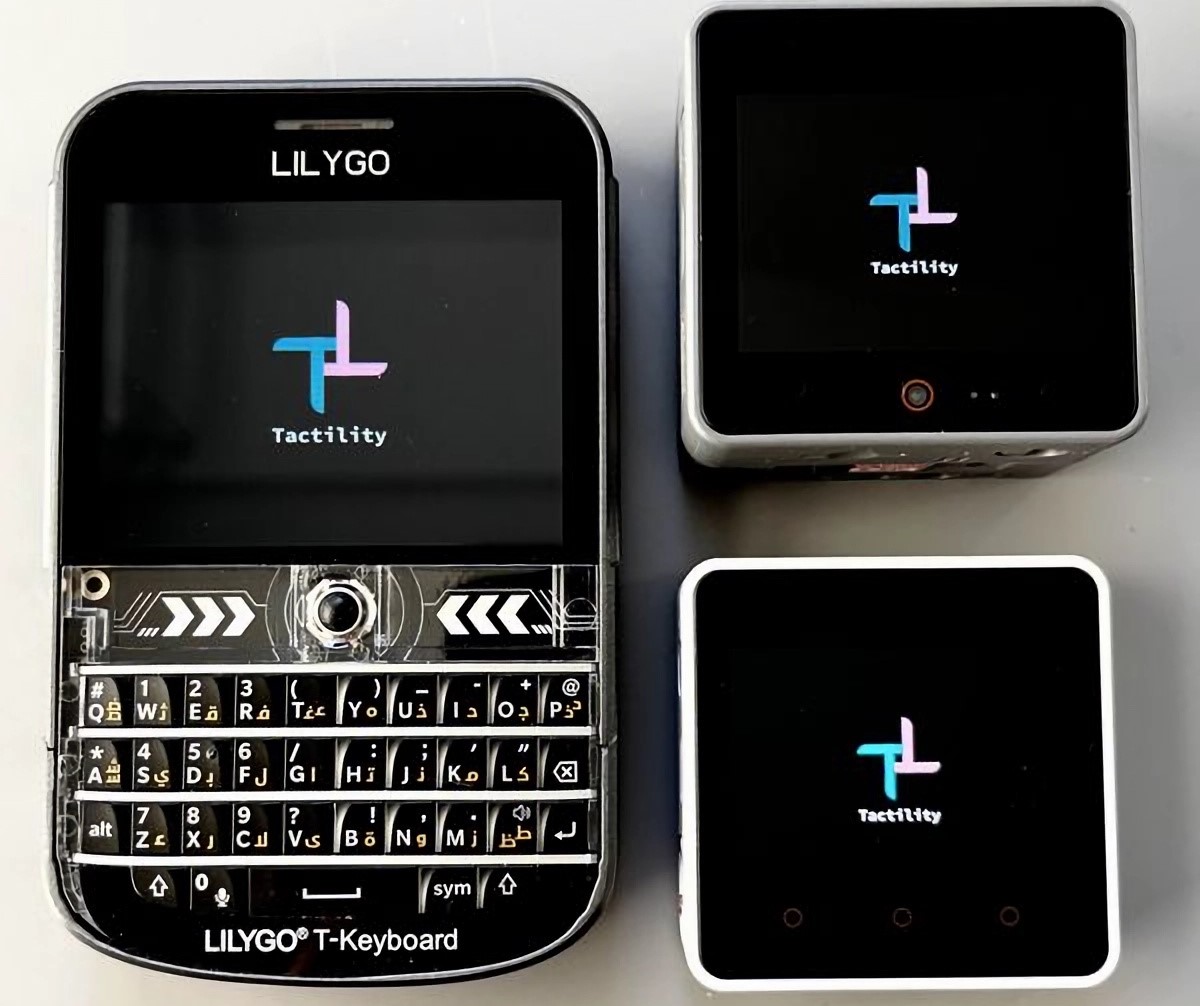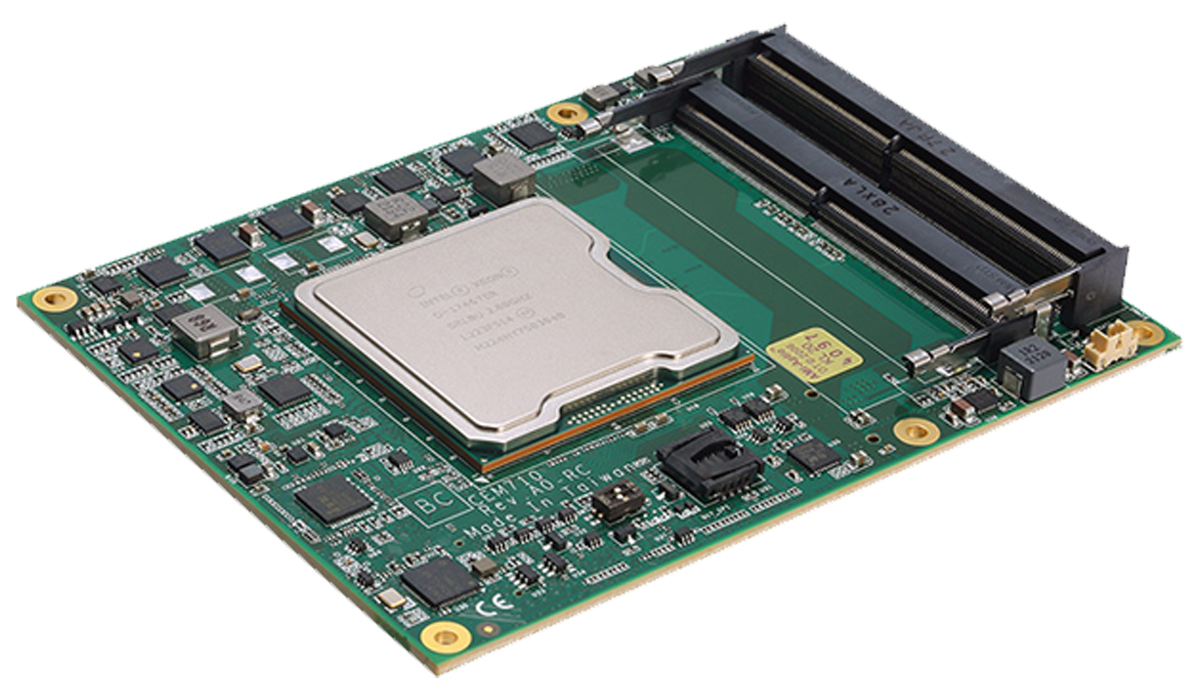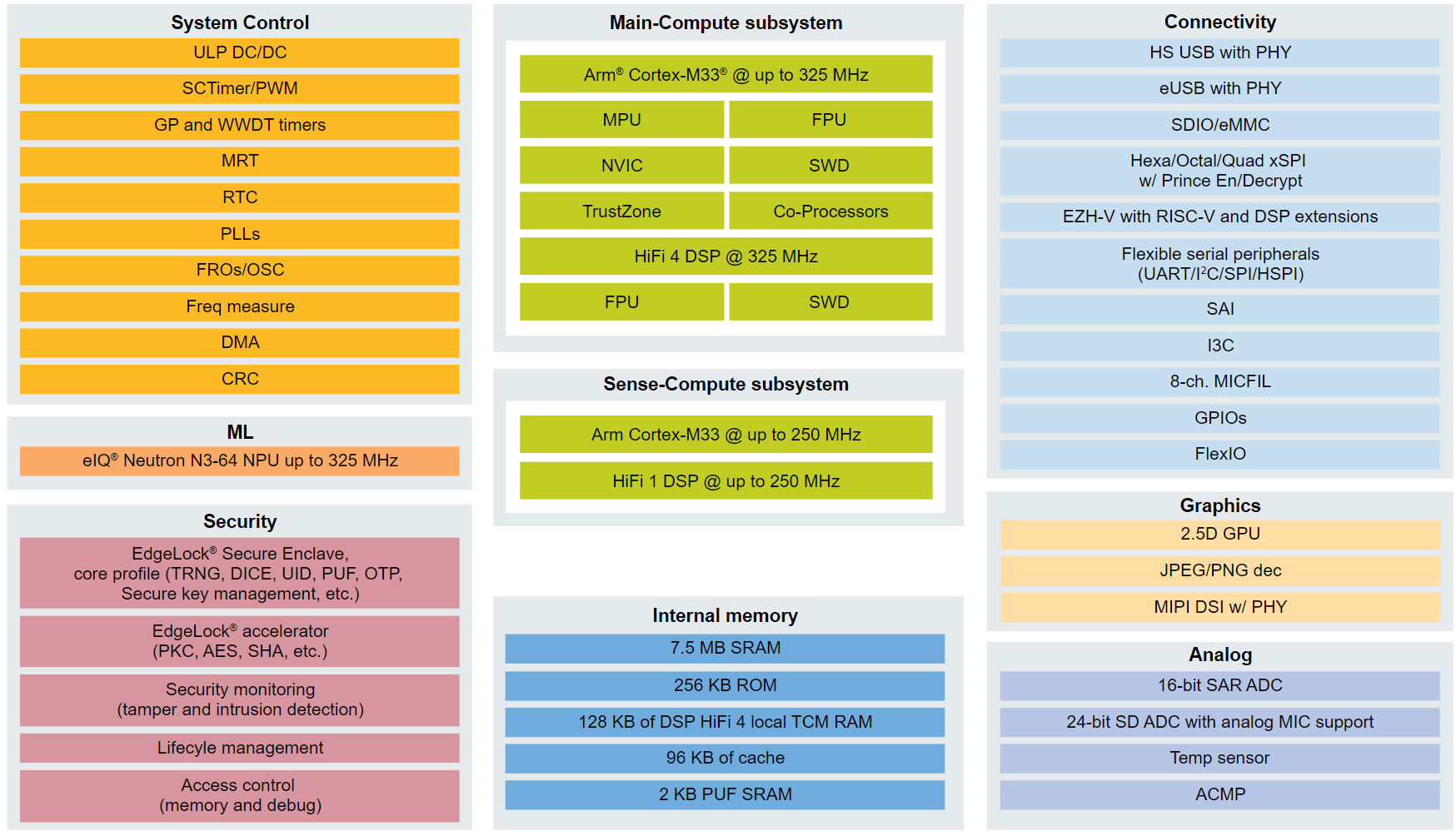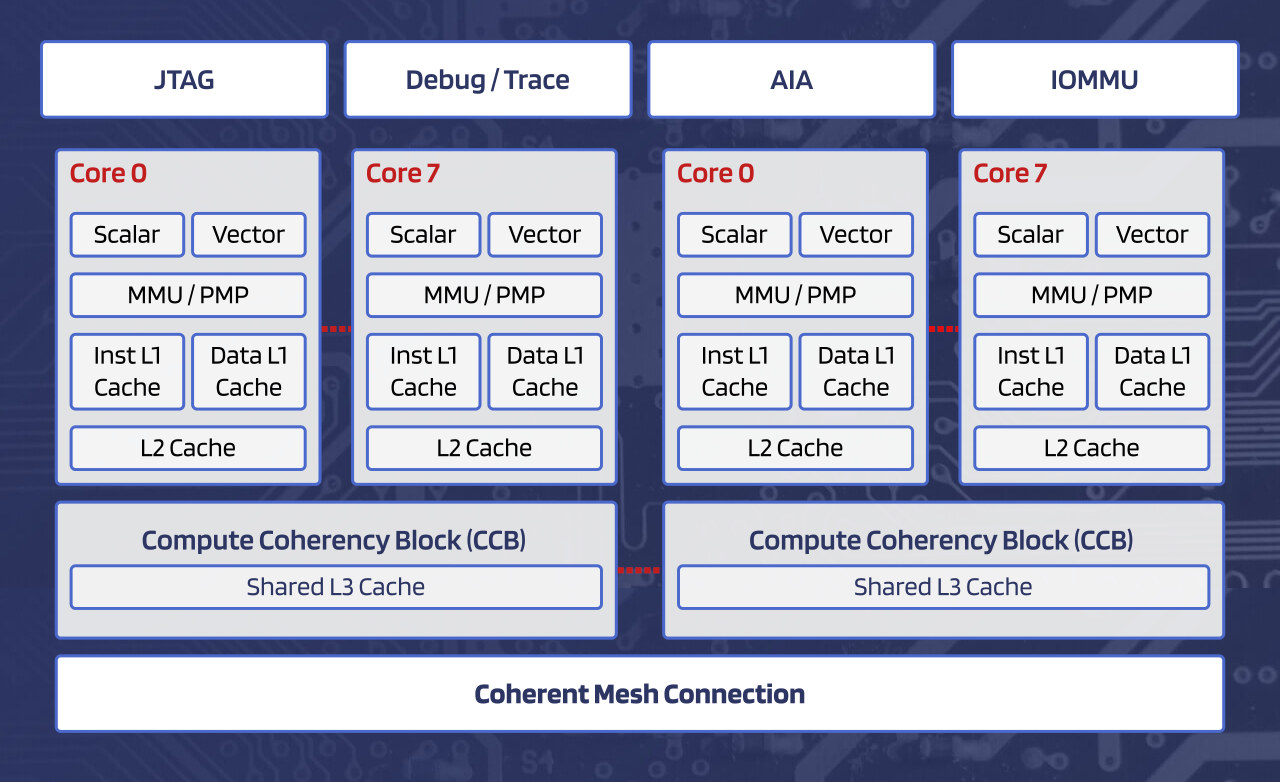Renesas RA0E2 is a low-power, low-cost Arm Cortex-M23 microcontroller (MCU) Group part of the RA0 family introduced in 2024 that can operate in an extended temperature range (-40°C to +125°C) and offers a wide variety of peripheral functions and safety features. It follows the RA0E1 devices – the first member of the RA0 family – designed for consumer electronics, household appliances, power tools, industrial monitoring, and other applications, including battery-powered devices. The new RA0E2 MCUs offer both software and pin-to-pin compatibility (for 32-pin SKUs) with RA0E1 devices, but the new family adds more memory and storage with up to 16KB SRAM, 128KB code flash, and 2KB data flash. The RA0E2 also features more I/Os with 32-pin to 64-bit packages, instead of 16-pin to 32-pin packages. Renesas RA0E2 specifications: MCU Core – Arm Cortex-M23 Armv8-M Core up to 32MHz Memory and Storage 16KB SRAM Code Flash – Up to 128KB Data […]
Allwinner T536 quad-core Arm Cortex-A55 & RISC-V industrial SoC supports ECC RAM, up to 3 TOP AI accelerator
Allwinner T536 SoC features four Cortex-A55 cores, a 600 MHz RISC-V core, and a low-power RISC-V for power management, as well as support for ECC memory and an optional NPU with up to 3 TOPS of AI performance. The processor is designed to work in the industrial temperature range (-40 to +85°C) and offers plenty of I/Os, including two Gigabit Ethernet, a USB 3.1 DRD and PCIe Gen2 conbo, MIPI DSI, RGB, and LVDS display interfaces, paralle CSI and MIPI CSI camera interfaces, CAN FD, SPI, I2C, UART, several ADC, and more. The SoC is designed for interactive terminals, smart manufacturing, and other Edge AI industrial equipment. Allwinner T536 specifications: CPU cores Quad-core Arm Cortex-A55 @ up to 1.6GHz Single-core E907 RISC-V core @ up to 600 MHz Single-core E902 RISC-V MCU for low-power management GPU – G2D hardware accelerator with rotate, mixer, and scaler functions ISP Max resolution – […]
$23 ArmSoM Forge1 industrial SBC is powered by Rockchip RK3506J SoC
ArmSoM Forge1 is an industrial SBC (single board computer) powered by the Rockchip RK3506J triple-core Cortex-A7 processor designed for Smart Audio, HMI, and factory automation applications. The Forge1 is equipped with 512MB RAM, 512MB NAND flash, two Fast Ethernet ports, a MIPI DSI display connector, USB Type-A and Type-C ports, an audio jack, a 40-pin GPIO header partially compatible with Raspberry Pi HATs, and a 16-pin header with speaker output, microphone input, RS-485, and CAN Bus. ArmSoM Forge1 specifications: SoC – Rockchip RK3506J CPU 3x Arm Cortex-A7 core up to 1.5 GHz Arm Cortex-M0 real-time core GPU – 2D GPU only No VPU, no NPU System Memory – 512MB DDR3L Storage 512MB SPI NAND flash MicroSD card Video Output – 2-lane MIPI DSI connector up to 1280 x 1280@ 60FPS Audio 3.5mm audio jack Speaker and Mic via expansion header Networking – 2x 100Mbps Ethernet RJ45 ports USB 1x USB […]
Renesas RA4L1 ultra-low-power MCU family offers 168 µA/MHz operation, dual-bank flash, capacitive touch
Renesas has recently introduced the RA4L1 ultra-low-power Arm Cortex-M33 MCU family along with two evaluation/development boards. This new lineup consists of 14 ultra-low-power devices based on an 80 MHz Arm Cortex-M33 processor with TrustZone support and designed for metering, IoT sensing, smart locks, digital cameras, and human-machine interface (HMI) applications. The RA4L1 MCU family offers high power efficiency at 168 µA/MHz while active and a standby current of 1.70 µA while retaining SRAM. Additionally, they support segment LCD, capacitive touch, USB-FS, CAN FD, low-power UART, multiple serial interfaces (SPI, QSPI, I2C, I3C, SSI), ADC, DAC, real-time clock, and security features like the RSIP security engine with TRNG, AES, ECC, and Hash. Renesas RA4L1 microcontroller Renesas RA4L1 specifications MCU core Arm Cortex-M33 core (Armv8-M) Up to 80 MHz operating frequency Arm Memory Protection Unit (MPU) 8 secure regions (MPU_S) 8 non-secure regions (MPU_NS) CoreSight ETM-M33 Dual SysTick timers (secure & non-secure) […]
Tactility “operating system” for the ESP32 microcontroller family supports built-in and external applications
Tactility is an operating system that runs on the ESP32 microcontroller series. Created by Dutch software developer, Ken Van Hoeylandt (also known as ByteWelder), Tactility is a project one year in the making inspired by the Flipper Zero and its application platform. The ESP32 operating system can run built-in apps and helper services from flash storage as well as external applications from an SD card. It leverages the Espressif ELF(Executable and Linkable Format) loader to load ELF files from external storage to the executable memory area. Tactility is built to run on any ESP32-based device with a touchscreen since drivers (display, touch, and SD card) can be implemented for any hardware. ESP32-S3 devices are “the best option” due to their performance and larger memory. The LILYGO T-Deck series is highly recommended for its onboard keyboard and sizable display. Preset configurations are available for the LILYGO T-Deck Plus, LILYGO T-Deck, M5Stack […]
Axiomtek CEM710 COM Express module features Intel Xeon D-1700 SoC with up to 100Gbps Ethernet support
In 2022, we covered Intel’s Xeon D (Ice Lake-D) processor family, which includes the D-2700 and D-1700 models. These processors are designed for software-defined networking and edge applications, providing data center-grade capabilities at the edge. Key features include integrated AI and crypto acceleration, built-in Ethernet, and support for Intel Time Coordinated Computing (TCC) and Time-Sensitive Networking (TSN) to ensure high reliability. Leveraging these advanced capabilities, companies like ADLINK Technology and Congatec have introduced COM-HPC server modules and COM Express Type 7 modules based on the new Xeon D lineup. Axiomtek’s CEM710 is a COM Express Type 7 Basic Module powered by Intel Xeon D-1700 Series processors, designed for edge computing, industrial automation, and data-intensive applications. It offers up to 10 cores, 100Gbps Ethernet, and 64GB of DDR4 ECC memory, along with PCIe Gen3 slots for expandability. With rugged features and TPM 2.0 for security, it ensures reliable performance in demanding […]
NXP i.MX RT700 dual-core Cortex-M33 AI Crossover MCU includes eIQ Neutron NPU and DSPs
NXP has recently announced the release of NXP i.MX RT700 RT700 AI crossover MCU following the NXP i.MX RT600 series release in 2018 and the i.MX RT500 series introduction in 2021. The new i.MX RT700 Crossover MCU features two Cortex-M33 cores, a main core clocked at 325 MHz with a Tensilica HiFi 4 DSP and a secondary 250 MHz core with a low-power Tensilica HiFi 1 DSP for always-on sensing tasks. Additionally, it integrates a powerful eIQ Neutron NPU with an upgraded 7.5 MB of SRAM and a 2D GPU with a JPEG/PNG decoder. These features make this device suitable for applications including AR glasses, hearables, smartwatches, wristbands, and more. NXP i.MX RT700 specifications: Compute subsystems Main Compute Subsystem Cortex-M33 @ up to 325 MHz with Arm TrustZone, built-in Memory Protection Unit (MPU), a floating-point unit (FPU), a HiFi 4 DSP and supported by NVIC for interrupt handling and SWD […]
Akeana unveils 10 RISC-V cores suitable for microcontrollers up to data center chips
Founded about three years ago, Akeana has just officially launched and announced three 32-bit and 64-bit RISC-V processor lines and SoC IP with the Akeana 100 series for 32-bit microcontrollers, the Akeana 1000 series for 64-bit processors with MMU, and the Akeana 5000 series with much higher single-thread performance and designed for laptops, data centers, and cloud infrastructure. The company also introduced Scalable Coherent Interconnect, Interrupt Controller, and IOMMU IP for building out compute subsystems based on the aforementioned RISC-V cores, as well as AI-targeted Vector RISC-V Cores and Matrix Computation IP. The design team is said to have previously worked on Marvell’s ThunderX2 server chips. Akeana 100 Series The Akeana 100 Series is a line of highly configurable processors with 32-bit RISC-V cores that support applications from embedded microcontrollers to edge gateways, to personal computing devices. Four Akeana 100 RISC-V cores are available Akeana 110 for area- and power-constrained […]



